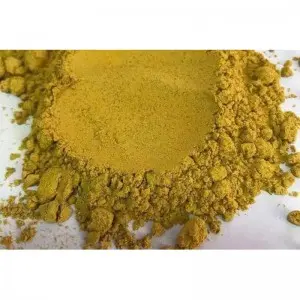Sep . 28, 2024 17:16 Back to list
Finding the Right Pear Pollen for Our Custom Needs
The Importance of Pear Pollen A Custom Approach to Cultivation
In the world of horticulture, the role of pollen cannot be overstated. Pear pollen, in particular, plays a crucial role in the reproduction of pear trees and the quality of the fruit produced. As we delve into the significance of pear pollen, it becomes clear that a custom approach to its management and application can lead to better yields and healthier trees.
Understanding Pear Pollen
Pear trees (Pyrus spp.), like many fruit trees, reproduce through a process called pollination. Pollen, which is the fine powdery substance produced by the male reproductive organs of plants, is essential for fertilization. In pear trees, pollen grains must reach the stigma of a compatible female flower for successful fertilization and subsequent fruit development.
The timing and quality of pear pollen are critical factors. Pear trees typically bloom in the spring, and adequate weather conditions and pollinator activity are necessary for effective pollen transfer. Environmental factors such as temperature fluctuations, humidity, and the presence of pollinators like bees significantly affect pollen viability and transfer efficiency. Hence, understanding these elements can lead to more informed agricultural practices.
Cultivating Pear Trees with Custom Pollen Management
To optimize pear production, growers are increasingly recognizing the need for a custom approach to pollen management. This holistic strategy entails selecting the right cultivars, timing, and methods of pollination. A multi-facted approach can lead to improved fruit set and enhance overall orchard productivity.
1. Choosing Compatible Cultivars In pear cultivation, cross-pollination often results in better fruit yield than self-pollination. Therefore, selecting compatible cultivars that bloom at the same time is vital for maximizing pollen availability and ensuring effective fertilization.
custom we need pear pollen

2. Timing and Environmental Considerations Effective timing is crucial. Growers must monitor bloom times closely and make note of local weather conditions to plan for pollination activities. Utilizing weather data can assist in predicting the optimal time for pollinator activity, which is especially important during the critical bloom period.
3. Enhancing Pollinator Presence Encouraging a healthy population of pollinators is a key aspect of custom pollen management. Planting pollinator-friendly flowers nearby, minimizing pesticide use, and providing habitats for bees and other pollinators can create an inviting environment, ensuring that pollination occurs effectively.
4. Utilizing Controlled Pollination Techniques In some cases, artificial pollination methods can be employed to ensure successful fertilization. This could include hand-pollination techniques or the use of pollen collected from high-performing trees. Such methods help to supplement natural pollination, particularly in situations where pollinator populations may be declining.
5. Evaluating Pollen Viability Regular assessment of pollen viability can also play a role in custom pollen management. Researchers and growers can conduct viability tests to determine the health and effectiveness of the pollen being used. This can guide decisions about which cultivars to plant or how to adjust pollination strategies.
Conclusion
While the importance of pear pollen in the agricultural cycle cannot be underscored, the adoption of a custom approach to pollen management brings added benefits to pear cultivation. By understanding the intricacies of pollination and implementing tailored strategies, growers can enhance fruit yields and produce healthier trees that ultimately contribute to a thriving agricultural sector.
As we continue to face challenges related to climate change, declining pollinator populations, and agricultural sustainability, innovative practices that focus on the specific needs of crops such as pears will be essential. The future of pear cultivation is promising, especially with practices that prioritize and optimize the pivotal role of pollen. By embracing a custom approach to pollination management, pear growers can significantly enrich the vitality of their orchards and the quality of their harvests.
-
Plant Pollen Analysis: Fast & Accurate with GPT-4 Turbo
NewsAug.02,2025
-
KiwiPollen with GPT-4 Turbo: AI Health Supplement Boost
NewsAug.01,2025
-
Pollen Peach Tree AI Management with GPT-4-Turbo
NewsJul.31,2025
-
Eco Fruit Paper Bags for Peak Freshness | Durability Focused
NewsJul.31,2025
-
Pollen Peach Tree for Pure Pollination and High-Quality Peach Pollen
NewsJul.30,2025
-
Premium Cherry Pollen for Pure Pollination & Different Types
NewsJul.30,2025